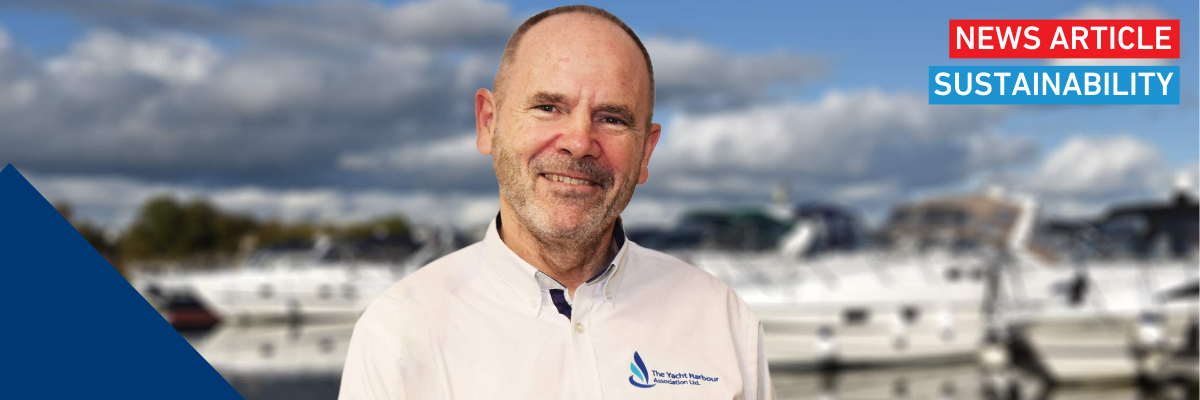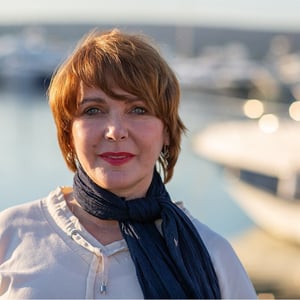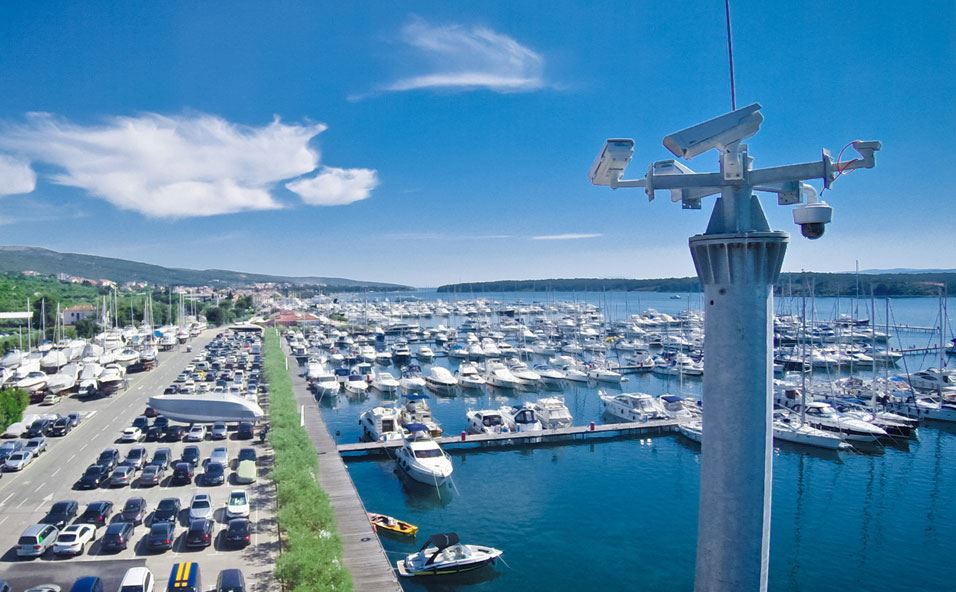 Kim Hollamby
Kim Hollamby
We talk to TYHA General Manager, Jonathan White about one of the latest awards to offer marinas a pathway for attaining sustainability objectives and ask Marina Punat manager Renata Marević about the benefits of using accreditation for environmental benchmarking.
The number of marinas around the world that have voluntarily attained a national or international environmental award or compliance programme now runs into the thousands. There are several schemes and the requirements and testing methods of each varies. However, at their core the ambitions of these initiatives are similar – for marinas to attain tangible benchmarks that demonstrate their operations are focused on sustainable practices with consequent environmental impact minimised.
To understand how a scheme works in practice, we spoke with Jonathan White, general manager for The Yacht Harbour Association (TYHA). This organisation is UK-based and sits within the British Marine industry association, with operations across Europe and the Middle East. Through its Global Marine Institute partnership with the Australian Marina Industries Association (MIA) it delivers a highly successful certification programme for marina managers and other sector professionals. TYHA and the MIA also collaborate on the Gold Anchor marina quality scheme.
These organisations each have an environmental accreditation programme. The MIA’s International Clean Marina Program is the longer running of the two. It currently offers two tiers: Level 3 includes a desktop audit and a field inspection by a trained independent environmental consultant. Level 4 brings the marina’s environmental management in line with ISO 14001. An additional Fish Friendly Accreditation is available for marina operators working to improve fish habitat.
TYHA’s Clean Marina scheme was formulated in 2020-21. Its objectives are geared towards promoting industry best practice and helping marinas get the basics right, including:
“When we developed it, the TYHA Clean Marina scheme took into account the industry’s views on what it considers best practice,” Jon explains. “Our objective is to ensure that participate marinas are getting the basics right to prevent pollution and to look after the environment in other ways as well.
“When drawing up requirements the choice was made not to not include some items you might see in an environmental programme, such as confirmed fully eliminated use of single use plastics, employment of alternative power sources like solar and wind and provision of electric boat fast charging. Those types of initiatives often gain the most public attention but are only one part of the picture and don’t address core issues with marina operations and their potential impacts.”
The decision to promote progress on the basics is a pragmatic view that recognises many quick wins can be made which will make a difference. The targets that TYHA has set are achievable so that the programme can quickly gain engagement and traction.
While many facilities have improved over the years the marina sector still has much to achieve in the areas that the scheme is focused on. By meeting the Clean Marina accreditation requirements, any marina will making an appreciable improvement to its impact on the immediate environment and beyond its boundaries, compared to typical past practice.
An early adopter of Clean Marina is Marina Punat, nestled in one of the best-protected natural coves on the Adriatic. Marina manager Renata Marević CMM explains why this Croatian haven chose to use environmental awards for its benchmarking: “Since its establishment in 1964, Marina Punat has been closely connected to the environment, especially to the sea. The beauty of the Adriatic reminds us of our responsibility to protect and preserve this natural wonder that we are all living from.

“We adopted the Blue Flag programme in 1998 and became the first company in Croatia to have the privilege of raising it more than 25 years in a row. A lot of our environmental protection practices for marina and boatyard operations are described in our Environmental Policy, and we have chosen to show and evaluate this through the Clean Marina programme.
“It is imperative to minimise the ecological footprint and safeguard the delicate marine ecosystems upon which we all depend. By joining the programme, we committed ourselves to a set of standards designed to redeem pollution, conserve resources, and promote environmental education among our staff and marina residents. We expect our efforts to strengthen the acceptance of our operation in the local community as well.
“Compliance with the Clean Marina Program did not require us to make many adjustments to Marina Punat's operations, because we were already monitoring and managing most of the technological processes that could threaten the environment. These included advanced waste management systems, a grey and black water disposal system for our annual and daily visitors and renewable energy solutions.
“We encourage the use of environmentally friendly cleaning products. Staff members undergo continuous training to ensure best environmental practices are implemented. Each year, we undertake infrastructural upgrades and make sure that we use solutions that reduce the ecological footprint, reduce the risk of contamination and pollution. We’re also working on replacing single-use plastic with more durable or sustainable alternatives and have dramatically reduced paper usage by transitioning to digital communications. Recognising that sustainability is no longer just a choice but our collective responsibility, our goal is to improve every aspect of the functioning of the marina.
Clean Marina accreditation has proven to be helpful for Marina Punat both operationally and from a marketing standpoint. Operationally, the programme facilitates streamlined processes that we already have and improves efficiency. The adoption of sustainable practices has led to reduced resource consumption and operational costs. Reputationally, aligning with the Clean Marina programme demonstrates that Marina Punat is one of the leaders in environmental responsibility within the maritime industry. This distinction resonates with conscientious sailors and eco-conscious boaters and serves as a compelling marketing asset, distinguishing us as a destination of choice for those who prioritise sustainability.”

The first step on the Clean Marina scheme is completion of a self-assessment spreadsheet on which a comprehensive range of factors are scored by the operator using a scale of 0 to 2. These span the core objectives of the scheme and the marina’s compliance with relevant legislation. It also encompasses the need for policies and procedures across related subjects such as use of sustainable products, reduction of single plastics, environmental training and berth holder terms and conditions.
The marina must reach a minimum pass rate of 80 per cent and the scores are validated through on-site assessment by an independent inspector. Once the marina attains Clean Marina status then it is re-assessed every three years.
As a part of the process the marina affirms its intention to comply with the Clean Marina Commitment, to:
The emphasis on collaboration and knowledge sharing is important. Sustainability is an area where there is no discernible commercial advantage to be gained from withholding practical information and best practice. Jon emphasises the proven benefits of the whole sector working together to achieve environmental improvement. He also confirms that the marina equipment supply chain today can supply everything required to be meet Clean Marina requirements.
What happens in the future will depend of course on a mix of legislative change, public sentiment, and technology shifts among other factors. TYHA’s Clean Marinas scheme currently has 35 marinas accredited across Europe with more to follow. There are no defined next steps at this stage, but requirements will inevitably change. For now, the focus remains on getting the basics right and encouraging more marinas to improve their day-to-day practices for the good of all.
In addition to the TYHA and MIA schemes features here, there are several worldwide environmental awards and compliance programmes for marinas. One of the largest is Blue Flag with more than 700 marinas in compliance globally. The French Ports Propres lists 178 national marinas in its scheme. In the US separate Clean Marina programmes are run in in coordination with the National Oceanic and Atmospheric Association (NOAA) across 37 states – Boat US has handy links to them here.